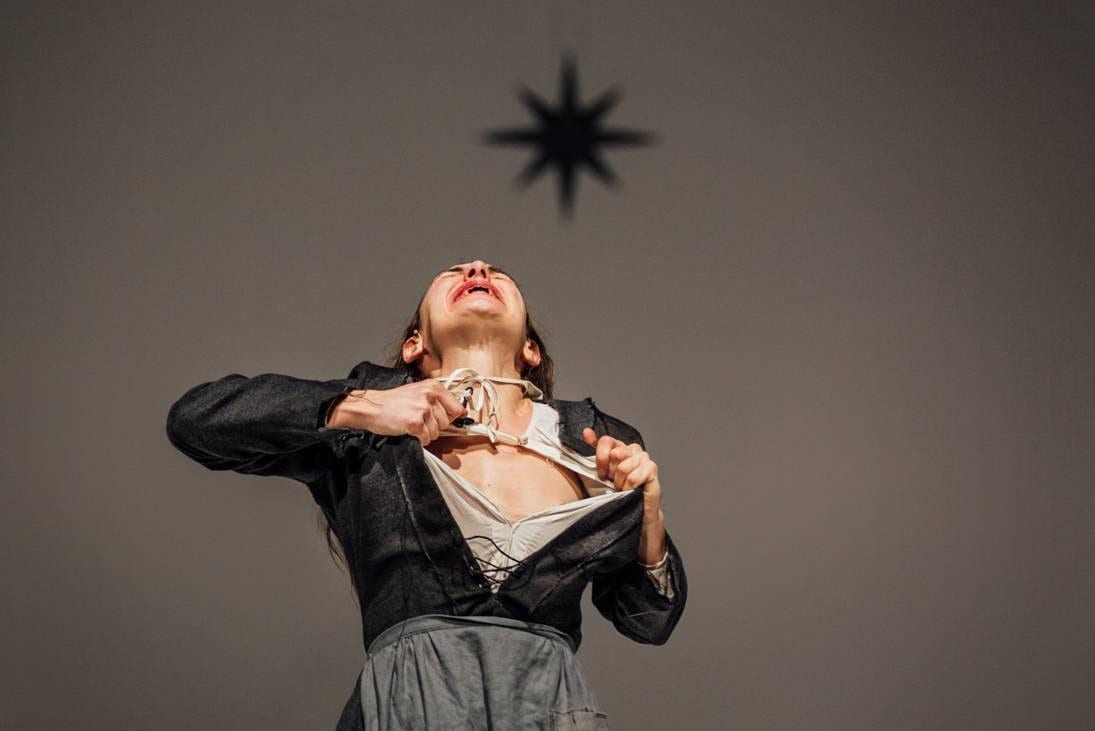Democracy in America is the title of the last work of the great and controversial Italian director Romeo Castellucci presenting in Athens Festival during the period 30 June – 2 July. It was inspired by the influential essay Democracy in America (1835), by the French philosopher Alexis de Tocqueville (1805-1859) which critically anatomizes the American civic institutions from a European viewpoint. Freely inspired by de Tocqueville’s work and period, Romeo Castellucci manages not to make a predictable political performance, instead we are presented with deeply sociological creation.
The performance starts with a scene inspired by a real life phenomenon called “Glossolalia” one of its occurences took place in a Pentecostal church in 1980. “Glossolalia” or “speaking in tongues” is a phenomenon in which people speak, or appear to speak, in languages unknown to them. This phenomenon is practiced in many religions like the Pentecostal Christians. During this first scene we are being informed by written messages that “Glossolalia” derives from glōssais lalein («Γλώσσαις λαλείν»), a Greek phrase used in the New Testament meaning “to speak in or with tongues [i.e., other languages]” (Acts 2:4, 1 Corinthians 14:18). The introductory part is presented by performers holding flags, which depict different letters. By changing their positions, they form different words or phrases. “Glossolalia” and all the introduction of “Democracy in America” is directly connected with “Elizabeth”, the heroine of the play and her upcoming story. Moreover, issues of glossology and the presence (or absence) of text are main queries and subjects of search for Romeo Castellucci and his ensemble “SOCÌETAS RAFFAELLO SANZIO”.
In the main scene of performance we see the story of a couple, Elizabeth and Nathanael, who live in “New England” in 18th century America, where the couple migrated to live a better life. But instead of the Promised Land, their new land is barren and unproductive. The desperate woman decides to sell their daughter in order to buy tools for their field. She decides to sacrifice her child and she hopes that the God will save it by changing her daughter with a ram as in the case of Abraham. But this doesn’t happen… Under the pressure of clerics the woman experiences the phenomenon of “Glossolalia” but not because of the excitement of her faith but because of the trembling sense of its ending. She speaks incomprehensible Indian words while she is being preparing to accept her punishment by church and by community.
At the last part of “Democracy in America” we see two indigenous American Indians trying to learn English, speaking about a woman who sold her daughter next to the river… The two men change out of their clothes, their skin and their personalities under the new reality; they must be others, they must be like white Americans in order to survive.
“Democracy in America”, raises familiar issues for the director; faith, religion, communities and the balance between the emotional needs of humans and the instinct of self-preservation. But in this work – in contrast to Go Down, Moses – he manages to combine his favorite driving force of technology (which was disproportionately used) with pure and minimal theatrical moments (as in the wonderful “On the Concept of the Face, regarding the Son of God”). The outcome is a balanced performance (with difficult moments of course) as far as technological tools and theatrical authenticity. As far as the meanings and their decoding; It is said that Samuel Beckett, once, had been asked if Godot is the God. He answered that if he wanted to speak about God he would do it! So, if you have the opportunity to enjoy this great performance, do it and leave questions out for the night. Needless to say that this work will stay in your mind for long…




